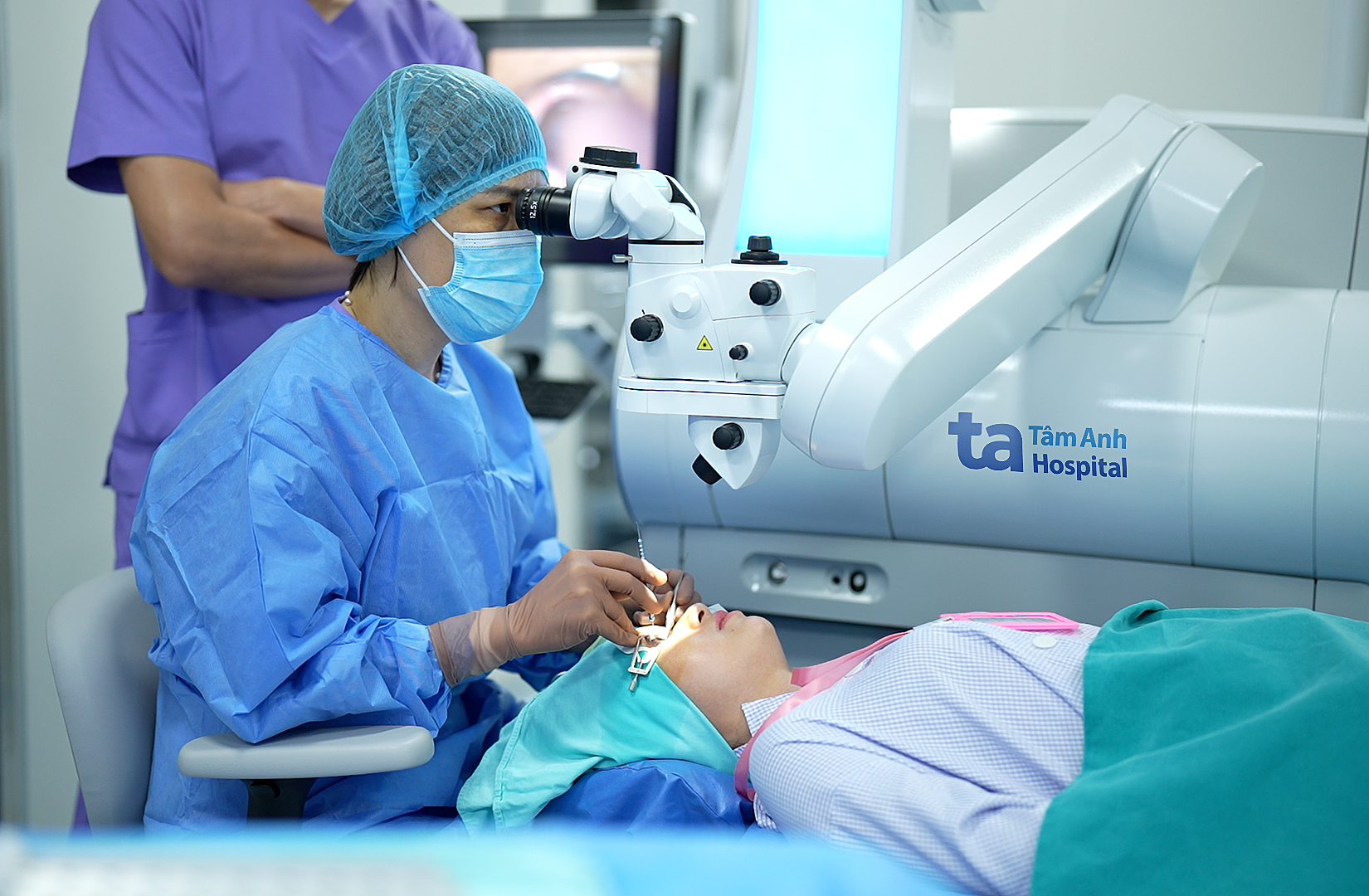Astigmatism, a common refractive error, occurs when the cornea or lens has an irregular curvature. This scatters light entering the eye, preventing it from focusing on a single point on the retina. The result is blurred, distorted, or fuzzy vision, both near and far. Astigmatism can occur alone or in conjunction with nearsightedness or farsightedness. Besides glasses and contact lenses, refractive surgery can treat astigmatism, improving vision, reducing dependence on corrective lenses, and enhancing quality of life and work productivity.
Doctor Le Thanh Huyen of the High-Tech Eye Center at Tam Anh General Hospital explains that LASIK, Femto-LASIK, and SMILE/SMILE Pro are used to treat refractive errors in general, including astigmatism. The specific procedure depends on the degree of astigmatism, corneal thickness, and individual vision needs.
LASIK/Femto-LASIK
LASIK (Laser-Assisted In Situ Keratomileusis) creates a corneal flap with a microkeratome and uses a laser to reshape the cornea, correcting refractive errors. Femto-LASIK works similarly, but a laser creates the corneal flap instead of a microkeratome.
According to Dr. Huyen, both techniques are affordable and quick but require sufficient corneal thickness and uniformity. Femto-LASIK precisely corrects mild to moderate astigmatism and addresses accompanying nearsightedness or farsightedness. It's the standard choice for individuals with adequately thick corneas and no other eye conditions.
 |
Associate Professor Nguyen Thi Thu Hien, Head of the Refractive Department at the High-Tech Eye Center, Tam Anh General Hospital, performs astigmatism surgery. Photo: Tam Anh Hospital |
Associate Professor Nguyen Thi Thu Hien, Head of the Refractive Department at the High-Tech Eye Center, Tam Anh General Hospital, performs astigmatism surgery. Photo: Tam Anh Hospital
SMILE and SMILE Pro
In recent years, SMILE (Small Incision Lenticule Extraction) and SMILE Pro have gained popularity due to their minimally invasive nature. Both use a laser to create and separate a small piece of corneal tissue (lenticule), which is then removed through a tiny incision (about 2 mm). Because no corneal flap is created, SMILE significantly reduces the risk of dry eye and other flap-related complications. Patients typically regain clear vision within 24 hours and can resume normal activities within a few days.
SMILE Pro can treat up to 10 diopters of nearsightedness and 4 diopters of astigmatism. It also incorporates advanced technologies, notably automatic eye tracking for precise treatment.
Phakic
Laser refractive surgeries require adequate corneal thickness. Phakic ICL intraocular lens implants are an option for individuals with thin corneas.
Dr. Huyen explains that this technique involves inserting a thin artificial lens into the eye, between the iris and the natural lens. This corrects refractive errors without affecting the cornea. Phakic lenses can be customized to correct nearsightedness and astigmatism or farsightedness and astigmatism. They are suitable for young people without cataracts, especially those needing high visual acuity or who are ineligible for laser corneal procedures.
Not everyone is a candidate for astigmatism surgery. The chosen method depends on refraction measurements, corneal topography, corneal thickness, pupil size, and other risk factors. Thorough pre-operative examinations and specialized tests are essential before deciding on treatment.
Khue Lam
| Readers can submit questions about eye diseases here for doctors to answer. |












